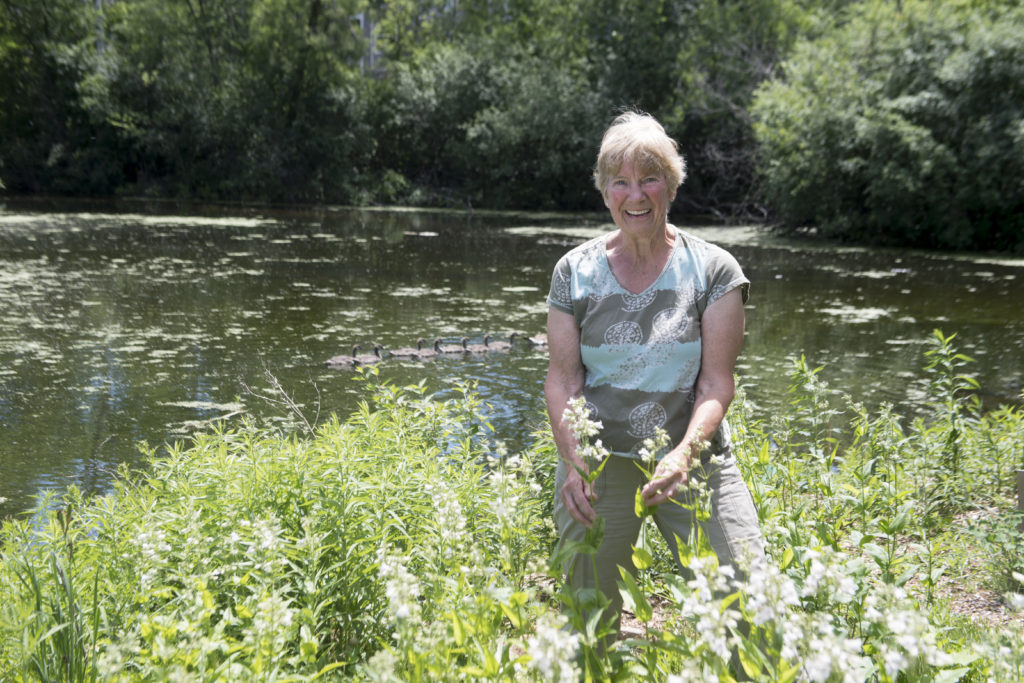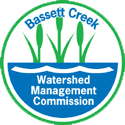News
Going Native with Shoreline Restoration
Wed, Jul 19, 2017Avid gardener Carol Rothe grew up in the area and remembers her brothers trapping beaver in this former marshland. Upon retirement from years supporting students with special needs, and a previous career working in Pillsbury and Perkins’ test kitchens, she tried a couple of gardening clubs. “But they really did nothing for me,” she admits. Shoreline restoration, on the other hand, captivates her analytical mind.
So, while others repair cracked sidewalks, Rothe and a small team of dedicated volunteers are making the shoreline plants and external setting of the church as spiritually inspiring as its interior.
Advantages of Native Plants
Foxglove Beardtongue, Common Milkweed, and Blue Flag Iris now flourish where once invasive Canadian Thistles comprised 80% of the ground cover. Touring the site, Rothe lists the native species she’s started from seed in milk jugs in the dead of winter: New England Aster, Rattlesnake Master, Rudbeckia, and dozens of others. These natives’ extensive root systems help filter parking lot runoff and provide pollinator habitat while reinforcing the shoreline.
“You just have to have patience,” she advises. It can take up to three years before the native seeds, once transplanted, mature and bloom.
With volunteer efforts such as these, “We’ve probably only spent about $500,” says Rothe, over the three-year process of shoreline restoration that is converting church grounds into pollinator-friendly environs, notably increasing monarch butterfly numbers.
First Steps in Shoreline Restoration
To get started on shoreline restoration, Rothe suggests:
- Assessing, critically, the “green concrete” grass that runs up to many urban and suburban shorelines, recognizing that lawn grass can be almost as impermeable as pavement and has much shorter roots than native plants.
- Visiting sites to see what others are doing.
- Reading Bringing Nature Home, by Douglas W. Tallamy, about replacing garden plants with pollinator plants.
- “Carefully editing” existing plants for those that are native.
- Using such online tools as Craigslist and “The Wild Ones” website for sourcing native species.
For more information on shoreline restoration, see:
- “Lakescaping and shoreland restoration” from the Minnesota Department of Natural Resources
http://www.dnr.state.mn.us/lakescaping/index.html
- Ramsey Co. and Rice Creek Watershed Districts (a “How To” guide with illustrations):
- Blue Thumb Guide about planting for clean water:
http://www.blue-thumb.org/why/


